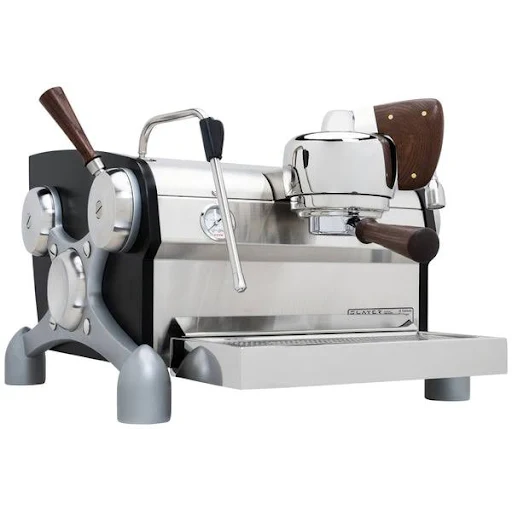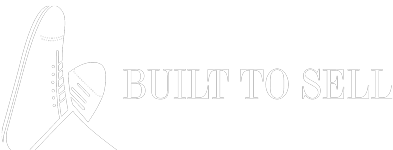This week in Built to Sell News, we’re covering how to:
- Maximize your negotiating leverage by understanding MOIC (listen now)
- Know when to sell
- Avoid re-trading
- Maximize the value of your business in an acquirer’s eyes
Steve Reardon started his entrepreneurial journey selling printers door-to-door in South Africa. After successfully selling his business for several hundred thousand dollars, he pivoted into managing a golf business and then built one of South Africa’s largest chains of bicycle retailers. Reardon’s next venture took him to California, where he earned his MBA from Stanford University.
Post-MBA, Reardon was headhunted to lead Alpine Software Group (ASG), a company specializing in acquiring industry-specific software businesses. Under his leadership, ASG has made over 40 acquisitions, one of which includes Sendible, a company founded by Gavin Hammer who was a former guest on Built to Sell Radio.
Given his experience as both a business operator and investor in more than 40 companies, we wanted to sit down with Reardon and hear his advice for owners preparing for a sale.
- Understand How Acquirers Earn Their Bonus: MOIC
During the interview, Reardon revealed the metric that often drives a professional investor’s compensation: MOIC stands for Multiple On Invested Capital. To simplify, if an acquirer invested $100 cash to buy your business, and they sold it seven years later for $400, they would have earned four times their money (4x).
Reardon explained that most professional investors use debt (i.e., leverage) to improve their MOIC. In the example above, if the investor had used $40 cash and gotten a loan to finance the remaining $60, their MOIC would have jumped to 10 x (i.e., they would have turned $40 of cash into $400).
Consequently, a professional investor aims to acquire businesses that show promising potential for significant future value at the lowest possible price while maximizing the use of leverage. These days, they exercise caution to ensure your business generates enough profit to repay the debt they plan to impose.
Understanding how a professional investor maximizes their bonus can make you a smarter seller. For instance, if you’re planning to accept some of your sale proceeds in the form of stock in a company, the investor intends to establish to own your business post-acquisition, inquire about the amount of debt they plan to incur. Evaluate if your business is likely to generate enough free cash flow to cover this debt well into the future. If you’re unsure, be cautious about accepting equity as a form of currency when you sell.
Taking equity instead of cash led to a seven-figure write-off for Ryan Moran.
- 0 to 1 vs. 1 to 10
Reardon described two kinds of leaders. There are founders who are amazing at getting a business from “0 to 1”. These are people who are great at starting businesses and getting them to a couple of dozen employees.
Then there are people who are great at taking an existing business and growing it (“1 to 10 people”). It’s rare to find someone who does both well.
Know if you are better at starting companies or growing them. If your strength is starting businesses, you may be happier (and potentially make more money), selling and moving on to your next venture before your business gets too big.
- Avoid Re-Trading
Re-trading happens when an acquirer lowers their offer after committing to an acquisition price in a Letter of Intent (LOI), because of something they discovered in diligence. Reardon tries to avoid re-trading whenever possible and suggested founders do three things to protect themselves:
- First, Reardon advises founders to be conservative in their growth projections. Although it might be enticing to predict exponential “hockey stick” growth to enhance your company’s value, failing to meet these lofty expectations in the time between the initial meeting with the acquirer and the final acquisition (often a span of at least six months) can give the acquirer a reason to re-trade.
- Second, Reardon emphasizes the importance of checking references. He recommends that founders request to speak with other others who have previously sold to the prospective acquirer. If the acquirer is hesitant or unwilling to connect you with previous sellers from their portfolio, it’s prudent to proceed with extreme caution.
- Lastly, Reardon cautions against the “Bait & Switch” strategy. Founders should avoid getting too attached to the highest offer at the Letter Of Intent (LOI) stage, as there are acquirers known for making generous initial offers only to significantly cut the offer back after the diligence process.
Re-trading often arises when an acquirer discovers during due diligence that a business is largely dependent on its founder. To circumvent this issue, document your Standard Operating Procedures (SOPs) with VidGuide™. Grab a 30-day free trial today.
- Be Durable
Reardon revealed the first thing he looks at in the software businesses they acquire is “Net Revenue Retention”, which is the proportion of customer revenue that a software business is able to retain each year, plus any upgrades they are able to sell to the same customers. He loves businesses that can offset all of their churn by selling more to existing customers (i.e., 100% Net Revenue Retention.).
Regardless of whether you own a software business or not, all acquirers are trying to evaluate how “durable” your revenue and profit will be after you’re gone.
📽️ Clip of the Week
In this video clip, Reardon unveils the key metric that frequently influences how professional investors are rewarded for their investments and acquisitions.
📣 Quote of the Week
“When we exit, those businesses are marked and we are evaluated on how well that has done.”
– Reardon elaborates on how the acquisitions made by his fund are evaluated and graded by its shareholders.
🏆 A Trophy For Coffee Lovers

Following the successful sale of his company to Reardon, Gavin Hammar decided to treat himself with an indulgence well-suited to his newly renovated home – a brand new, high-end coffee machine.
If you’re a coffee purist like Hammar, here are the top 5 most luxurious coffee machines on the market as of July 2023:
- Breville Oracle Touch: $3,400
- La Marzocco Linea Mini: $8,000
- Jura S8: $3,000
- Rancilio Silvia Pro: $2,700
- Slayer Espresso Single Group: $12,000
📈 Recent Deals
- Overstock.com, Inc. (NASDAQ: OSTK) has successfully acquired key intellectual property assets from Bed Bath & Beyond, Inc. through a Bankruptcy Court process. The acquired assets include website/domain names, trademarks, patents, customer database, loyalty program data, and other brand assets related to the Bed Bath & Beyond banner. The purchase, approved by the U.S. Bankruptcy Court for the District of New Jersey, was made for $21.5 million using cash on hand.
- Visa (NYSE: V) has announced the signing of a definitive agreement to acquire Pismo, a cloud-native issuer processing and core banking platform. Pismo operates in Latin America, Asia Pacific, and Europe. The acquisition, valued at $1 billion in cash, marks Visa’s strategic move to enhance its capabilities in these regions.
Thanks to Celena for nominating Steve to be a guest on the podcast. If you know a founder who has successfully exited their business and has valuable insights to share, we encourage you to nominate them.
This Week’s Contributors
Colin Morgan, Executive Producer of Built to Sell Radio, John Warrillow, Host of Built to Sell Radio, Daphne Parsekian, Copy Editor, and Denis Labataglia, Audio Engineer.



